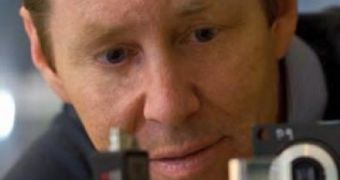One of the deepest mysteries related to modern physics is the phenomenon of high-temperature superconductivity, in which regular chemicals become superconductors at specific temperatures and pressures. In an attempt to further the scientific understanding of these processes, the US Department of Defense (DOD) awarded a $5-million grant to a team of American physicists from seven universities, who are to build a laser-based crystal simulator to study the phenomenon. The scientific collaboration is led by the Rice University (RU).
“The object is to simulate complex materials like high-temperature superconductors using ultracold atoms in an optical lattice. The lattice, which is created with lasers, simulates the crystal structure of the materials, while the atoms are stand-ins for the electrons,” the project's principal investigator, RU expert Randy Hulet, explains. The Defense Advanced Research Projects Agency (DARPA) will also aid in funding this investigation, as will the Army Research Office (ARO). For the second phase of the research, funding will be granted through the DARPA Optical Lattice Emulator (OLE) program.
In the first phase of the project, which has already concluded, Hulet and his team have demonstrated that lasers and ultracold atoms can, indeed, be used together to form lattices, and that these structures can accurately model high-temperature superconductors, as well as other exotic types of materials. The main idea of the research is to eventually produce a type of superconducting material cheaply. The US currently lose billions of dollars because electricity moving through cables meets resistance. Superconducting materials pose no resistance through electrical current at all.
“Many physicists believe that a certain model called the Hubbard model can explain how the electrons in these materials attract one another, but it remains controversial. Even though the model is simplified, solving it is an exponentially complex problem. It cannot be done on even the fastest computers,” Hulet says of the problems that lie ahead for the team. Ever since high-temperature superconductivity was discovered, in 1986, experts have wondered how the phenomenon takes place. The samples are inherently complex, and also impure, and, still, they turn into superconductors in the right conditions.
“It's difficult to study superconductivity in real materials, partly because even minor defects in the crystal structure can throw off the experimental results. But with the optical lattice, we can know, with absolute certainty, that there are no defects. We can really probe the essence of the model,” Hulet adds.

 14 DAY TRIAL //
14 DAY TRIAL //